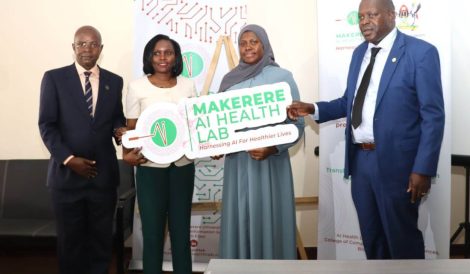Uganda’s Malaria Diagnosis Faces Critical Gaps, Says Malaria Consortium Expert
Despite notable progress in reducing malaria prevalence, Uganda still faces major challenges in diagnosing and managing the disease especially in hard-to-reach communities and among vulnerable populations such as pregnant women and children under five. Dr. Sam Gudoi, Senior Project Manager at the Malaria Consortium, shared these insights during a recent World Malaria Day webinar co-hosted by the Makerere AI Health Lab and the Malaria Consortium.
Dr. Gudoi highlighted that malaria remains the leading cause of morbidity and mortality in Uganda, accounting for 5% of global malaria cases and 3% of malaria-related deaths worldwide. He emphasized that while the country adopted the World Health Organization’s “test and treat” policy in 2010, full compliance is yet to be achieved. “Our current systems are not diagnosing all malaria cases effectively, particularly asymptomatic infections that form a hidden reservoir for sustained community transmission,” he said.
Key Diagnostic Challenges
According to Dr. Gudoi, one of the most pressing issues is the reliance on passive case detection based on symptoms like fever. However, asymptomatic carriers—estimated to account for up to 95% of infections—often go undetected, posing a serious obstacle to malaria elimination.
He also pointed out weaknesses in mosquito vector surveillance. “We often focus on treating patients but neglect monitoring mosquito populations infected with Plasmodium falciparum. This type of surveillance is crucial for predicting transmission trends and potential outbreaks,” Dr. Gudoi noted.
In malaria during pregnancy, he identified another diagnostic gap: the parasite tends to sequester in placental tissues, making standard blood smear tests less effective. Rapid diagnostic tests (RDTs), the primary tool in many health centers, often have reduced sensitivity in detecting pregnancy-related malaria. “This leads to misdiagnosis and risks both maternal and neonatal health,” he warned.
Case Management Gaps
Dr. Gudoi also highlighted systemic weaknesses in malaria case management. These include a shortage of skilled health workers, limited infrastructure, and poor supervision—all contributing to delayed diagnosis and suboptimal care. Emerging antimalarial drug resistance further complicates the diagnostic process, requiring more precise tools to differentiate malaria from other febrile illnesses.
He also addressed socioeconomic and geographic barriers that hinder access to diagnosis. “In a study on antimalarial use in the private sector, only 25% of patients could afford RDTs. That means 75% received treatment without being tested,” he revealed. Cultural beliefs and misconceptions around malaria further limit the uptake of diagnostic services in some communities.
Digital Health Pilot in Buikwe
To address some of these challenges, the Malaria Consortium piloted a digital health project in Buikwe District. The initiative focused on digitizing the work of Village Health Teams (VHTs), equipping them with mobile tools to improve reporting, diagnosis, and community-level treatment. The project was aligned with Uganda’s Ministry of Health’s e-Community Health Information System (eCHIS) framework.
The pilot involved training VHTs in both Luganda and English, providing regular supervision, and integrating the project within existing health system structures. According to Dr. Gudoi, results from a baseline and endline survey—using both qualitative and quantitative methods—revealed key outcomes:
VHTs reported increased motivation and confidence in using digital tools, especially as the platform supported both English and Luganda. Communities became more proactive in seeking healthcare, trust in the health system improved, and data could be shared and acted on in real time. The digitization also led to improved health outcomes, including a reduction in severe malaria cases. Continuous engagement with community members and health system stakeholders contributed to the success of the initiative, making the case for expanding similar models across the country.
Drawing from both the diagnostic challenges and the lessons of the Buikwe pilot, Dr. Gudoi made called for greater investment in electronic health systems for real-time surveillance and program decision-making. He advocated for establishing centralized sites to monitor mosquito populations for Plasmodium infection and resistance trends. He also encouraged the exploration of innovative diagnostic tools, including AI technologies, to address gaps in detection, particularly in low-resource settings. Additionally, he emphasized the importance of ongoing training and mentorship for health workers, and the need for strong supervision to maintain quality standards.
Dr. Gudoi concluded by stressing the importance of aligning new technologies with national health strategies. “Digital tools and artificial intelligence offer promising solutions,” he said. levels of the health system.”
End

